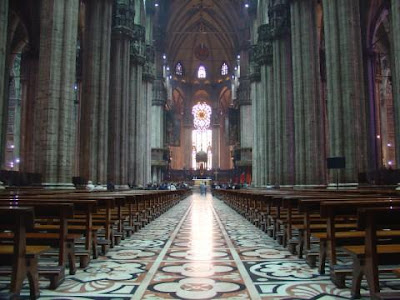Basil of Caesarea, also called Saint Basil the Great, (330– January 1, 379) (Greek: Άγιος Βασίλειος ο Μέγας) was the bishop of Caesarea Mazaca in Cappadocia, Asia Minor (modern-day Turkey). He was an influential 4th century Christian theologian and monastic. Theologically, Basil was a supporter of the Nicene faction of the church, in opposition to Arianism on one side and the followers of Apollinaris of Laodicea on the other. His ability to balance his theological convictions with his political connections made Basil a powerful advocate for the Nicene position.
In addition to his work as a theologian, Basil was known for his care of the poor and underprivileged. Basil established guidelines for monastic life which focus on community life, liturgical prayer, and manual labor. Together with Pachomius he is remembered as a father of communal monasticism in Eastern Christianity. He is considered a saint by the traditions of both Eastern and Western Christianity.
Basil, Gregory of Nazianzus, and Gregory of Nyssa are collectively referred to as the Cappadocian Fathers. The Eastern Orthodox Church and Eastern Catholic Churches have given him, together with Gregory of Nazianzus and John Chrysostom, the title of Great Hierarch. The Eastern Orthodox Church and the Roman Catholic Church have also named him a Doctor of the Church. He is also referred to as "the revealer of heavenly mysteries" (Ouranophantor).
source: en.wikipedia.org/wiki/Basil_of_Caesarea
In addition to his work as a theologian, Basil was known for his care of the poor and underprivileged. Basil established guidelines for monastic life which focus on community life, liturgical prayer, and manual labor. Together with Pachomius he is remembered as a father of communal monasticism in Eastern Christianity. He is considered a saint by the traditions of both Eastern and Western Christianity.
Basil, Gregory of Nazianzus, and Gregory of Nyssa are collectively referred to as the Cappadocian Fathers. The Eastern Orthodox Church and Eastern Catholic Churches have given him, together with Gregory of Nazianzus and John Chrysostom, the title of Great Hierarch. The Eastern Orthodox Church and the Roman Catholic Church have also named him a Doctor of the Church. He is also referred to as "the revealer of heavenly mysteries" (Ouranophantor).
source: en.wikipedia.org/wiki/Basil_of_Caesarea























































